Snapping Hip
Snapping hip is an audible clicking or snapping sensation caused by hip movement that can be painful. There are a variety of reasons patients present with a clicking or snapping sensation in the hip. A click in the hip can be the result of the following: a labral tear, iliotibial band syndrome, psoas bursitis, psoas tendon snap, and arthritis of the hip. It is essential for physicians to understand each cause to provide an effective course of treatment.
Labral Tear
A labral tear is a common cause for clicking sensations in the hip joint. The labrum refers to the ring of cartilage surrounding the socket of ball-and-socket joints. The labrum of the hip is essential in providing stability to the joint. This same ring of cartilage can be found in the shoulder.
Labral tears can be the result of degenerative or traumatic processes. Degenerative labral tears can occur from repetitive motions or osteoarthritis. Traumatic labral tears can occur from injury or dislocation of the joint. Femoroacetabular impingement is a common cause of a labral tear. Impingement occurs when the proximal femur abuts the acetabulum with movement of the hip. This occurs especially in hip flexion. A patient with a labral tear will usually present with complaints of a clicking or a locking sensation in the joint. In addition, a patient will present with pain in the hip or groin, stiffness and decreased range of motion.
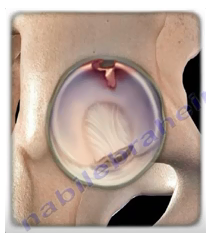
Diagnoses
To diagnose a labral tear, physicians will utilize a combination of physical examinations, imaging and diagnostic injections. MRI arthrograms are typically utilized to diagnose a labral tear, while injections are then used to confirm the diagnosis. Treatment for a labral tear can range from conservative modalities to surgical intervention. Conservative treatments include anti-inflammatory medications, physical therapy and injection. If conservative treatment fails, arthroscopic surgery may be needed to debride or repair the tear and the impingement can be addressed at the same time.
Iliotibial Band Syndrome.
Iliotibial band syndrome is another common cause of snapping hip. The thickened iliotibial band snaps over the bony greater trochanter of the femur. The patient may develop trochanteric bursitis, adhesions, gluteus maximus inflammation or edema.
Diagnosis
Diagnosis of iliotibial band syndrome can be done by direct palpation of the greater trochanter. This can be accomplished by placing a patient on their side, while putting the hip into extension and rotation until a "pop" is heard or felt. The patient can reproduce the snapping and sometimes this moment is physically seen.

Ober's Test
The Ober's test is the best clinical examination for assessing the tightness of the iliotibial band. To perform the Ober's test the patient will lay on their side with the unaffected leg on the bottom. The examiner will slowly abduct the leg with the knee in flexion and the hip in extension. When the iliotibial band is tight, the test is positive. In a positive test the patient will be unable to adduct the leg and the knees will not come together.
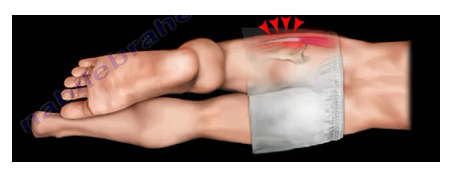
Iliopsoas Tendon Snap
Iliopsoas tendon snap is the result of movement over the iliopectineal eminence. The iliopsoas tendon will snap over the pelvic brim. It is caused by inflammation of the bursa that lies between the front of the hip joint and the iliopsoas muscle or tendon. Diagnosis is usually difficult, the ultrasound or MRI may be normal or it may reveal fluid anterior to the hip joint (bursitis). An iliopsoas injection can be diagnostic. Abduction and external rotation and hearing the snap or the click of the hip will support this diagnosis.
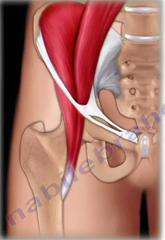
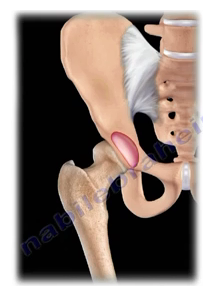
Hip Arthritis
A click in the hip can also result from arthritis in the hip joint. Arthritis leads to the loss of cartilage between the head of the femur and the acetabulum. Without adequate cartilage, there is bone-on-bone interaction that causes pain, tenderness and inflammation of the hip joint. Patients will present with stiffness (limited movement), clicking in the hip joint, pain worsening with activity, and tenderness in the groin and hip. Physicians will utilize a combination of physical examinations and X-rays to identify loss of cartilage. Treatment for hip arthritis can be conservative or surgical. With severe arthritis a hip replacement will be needed to remove and replace the arthritic joint.
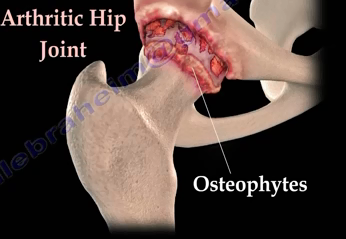
Follow the links to view more information on hip pain:
https://www.youtube.com/watch?v=0oVTJpVsyBE
For more videos, visit my YouTube page at the link below:
https://www.youtube.com/user/nabilebraheim
-- This feed and its contents are the property of The Huffington Post, and use is subject to our terms. It may be used for personal consumption, but may not be distributed on a website.
No comments:
Post a Comment